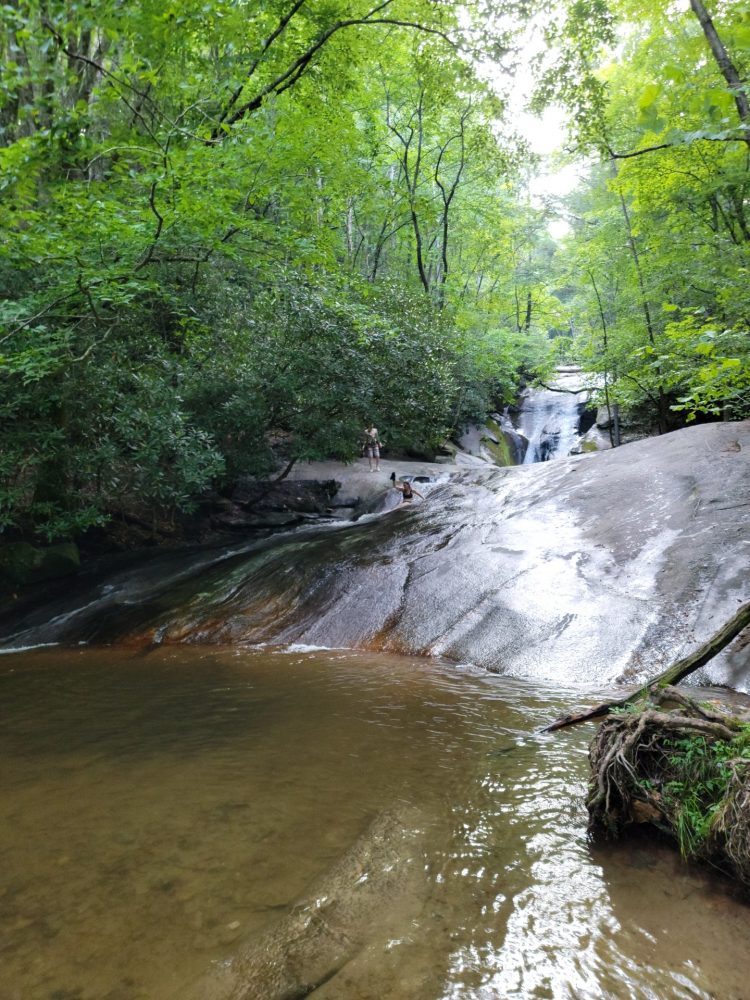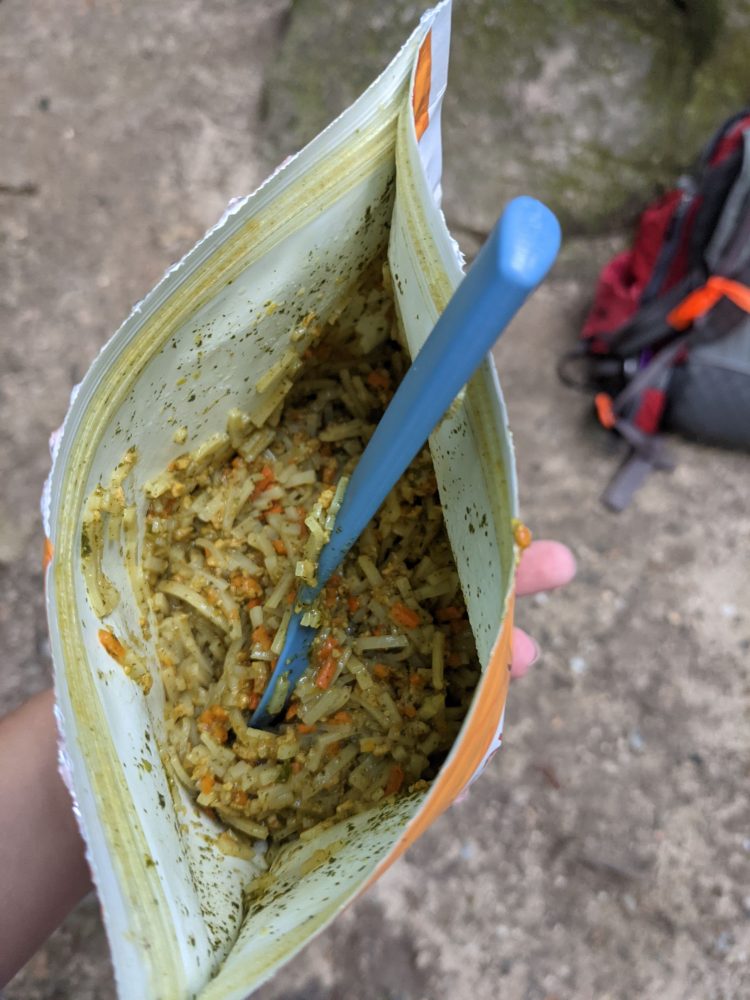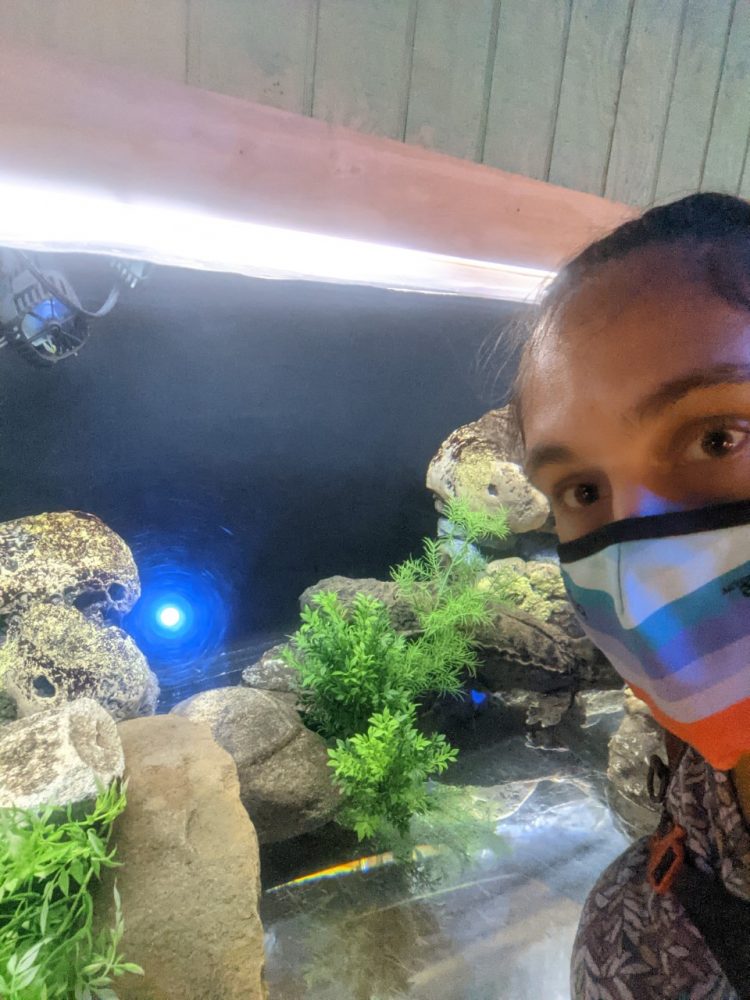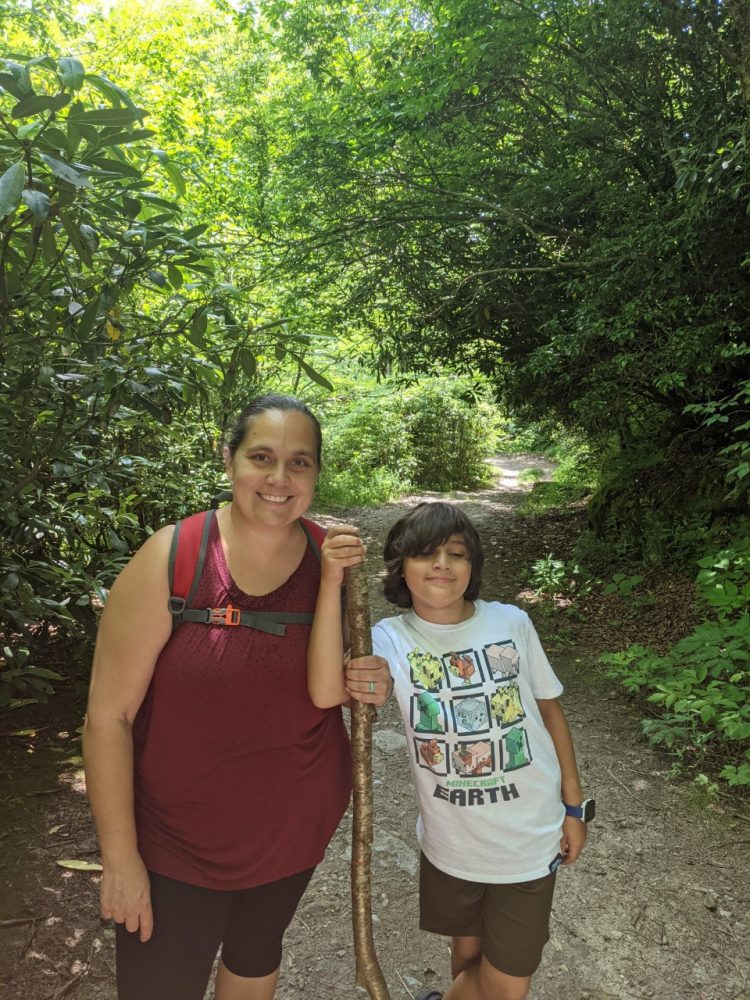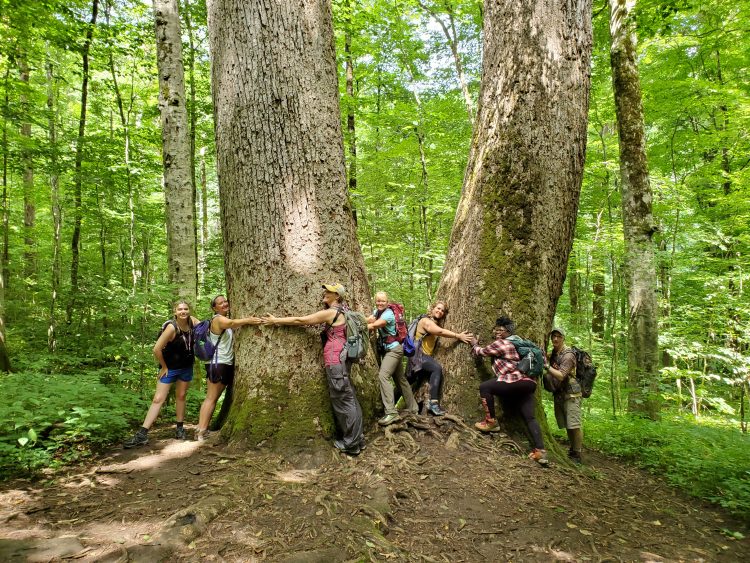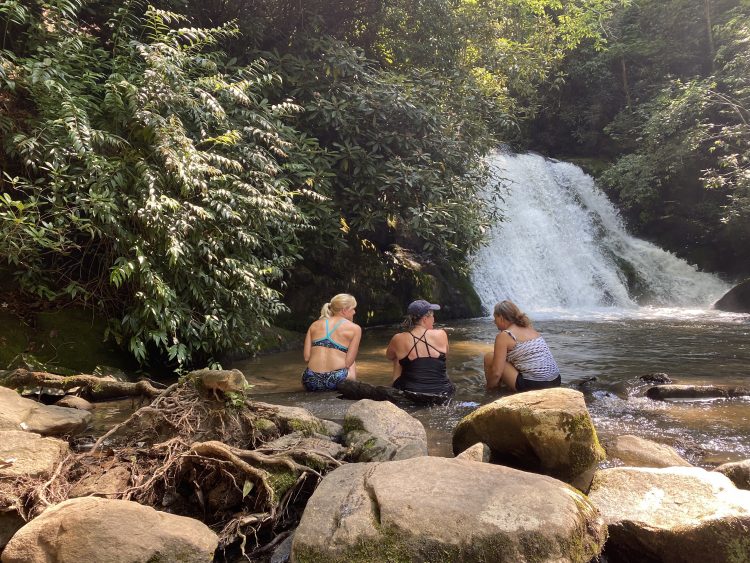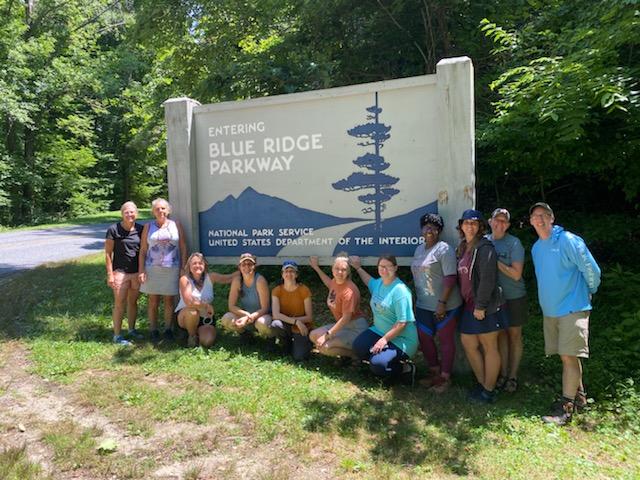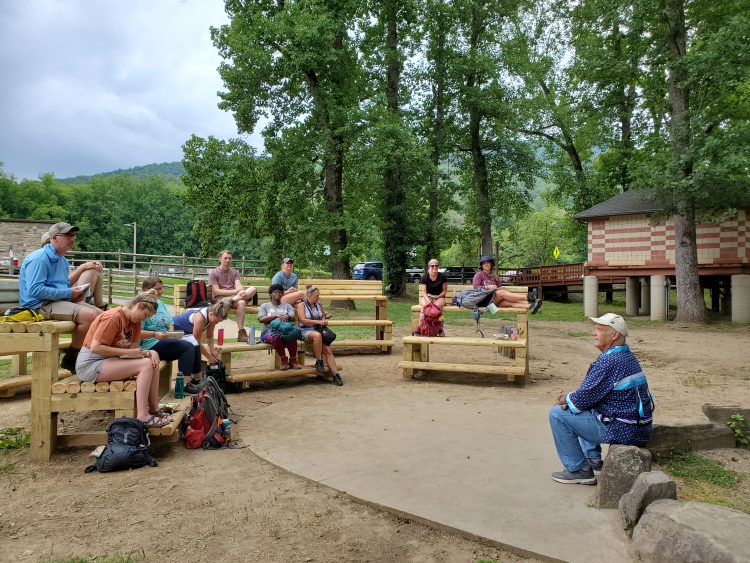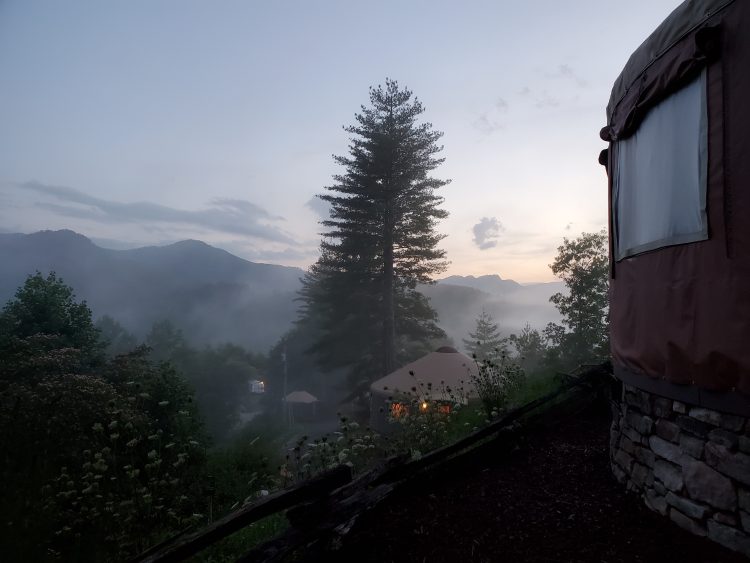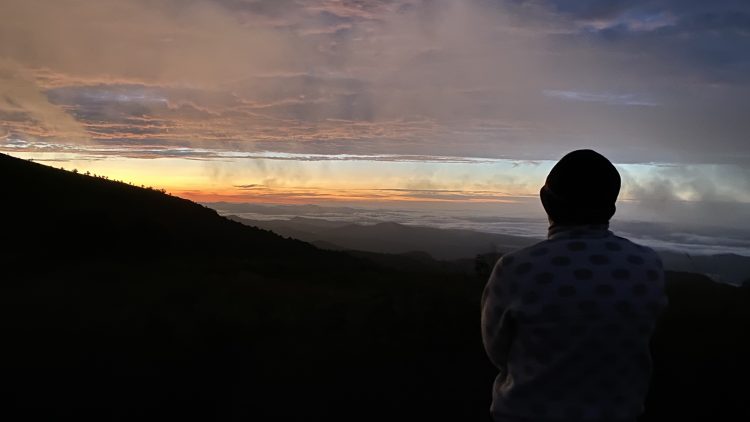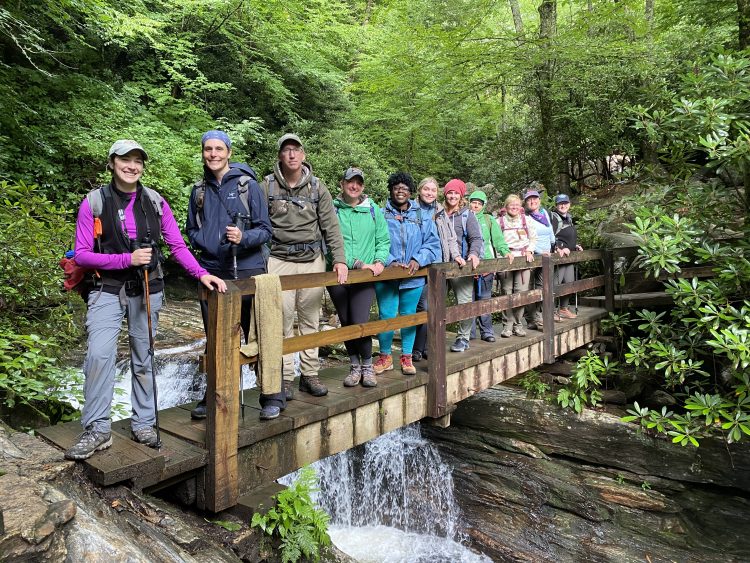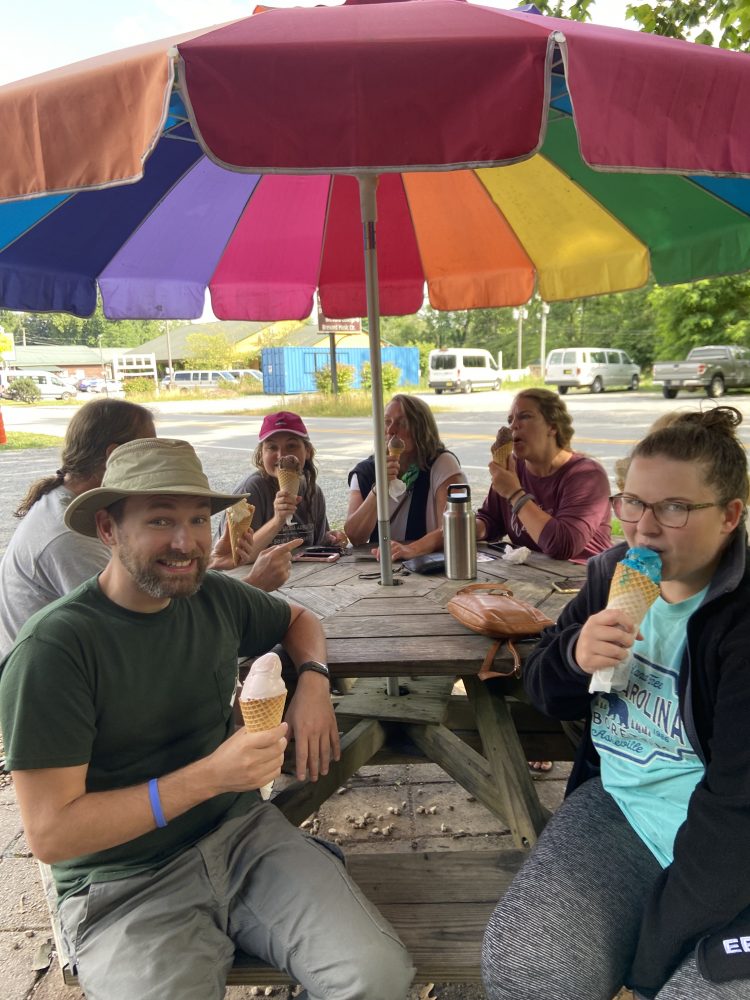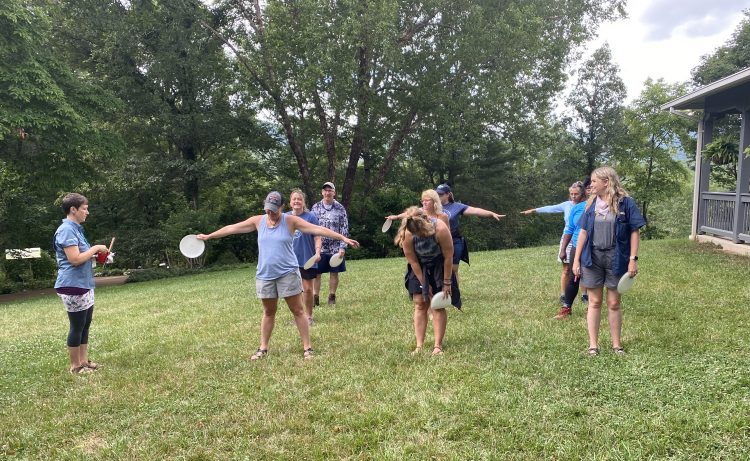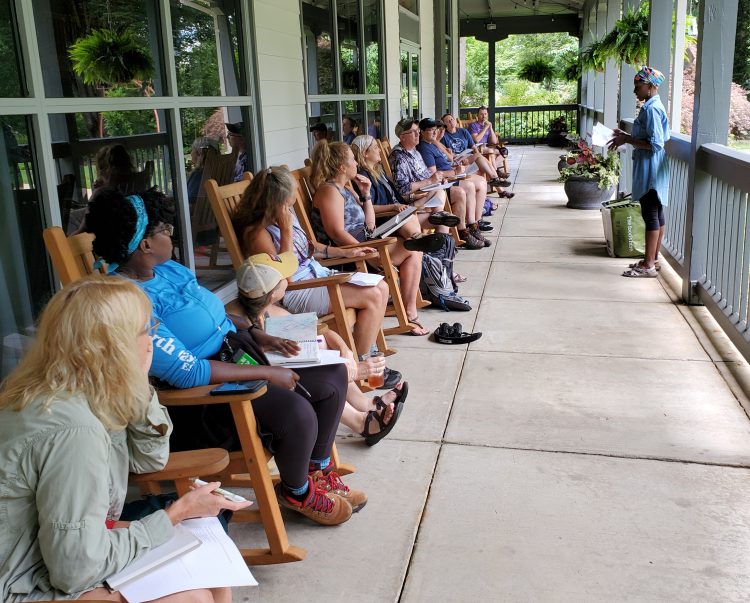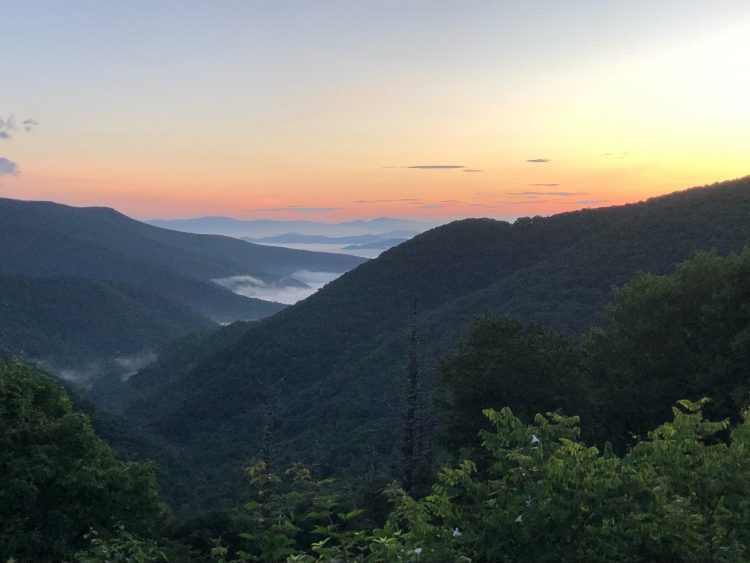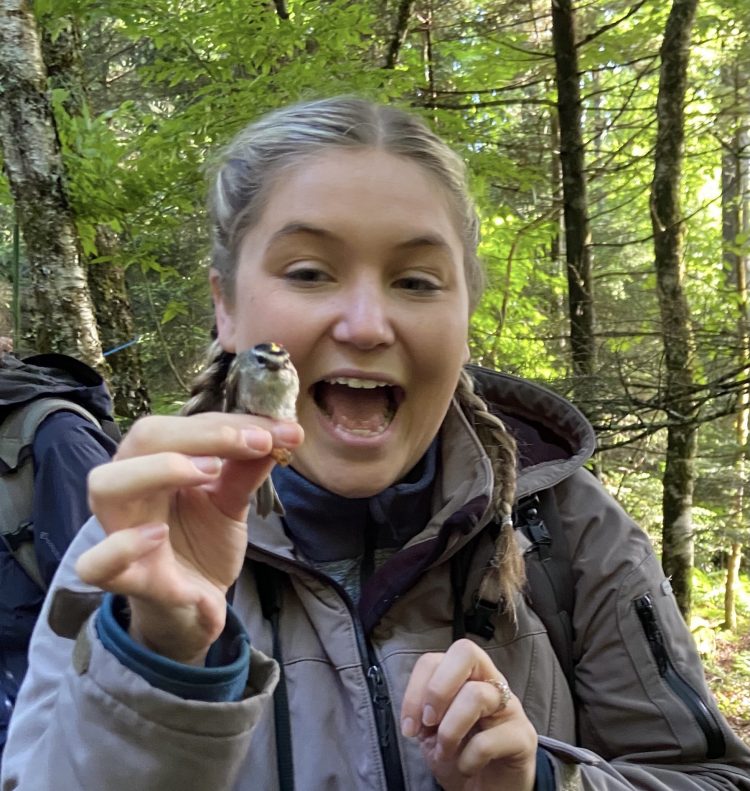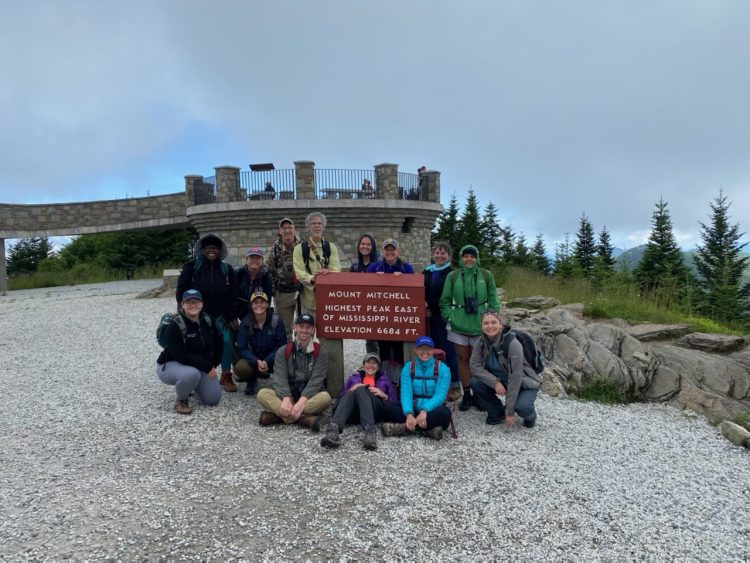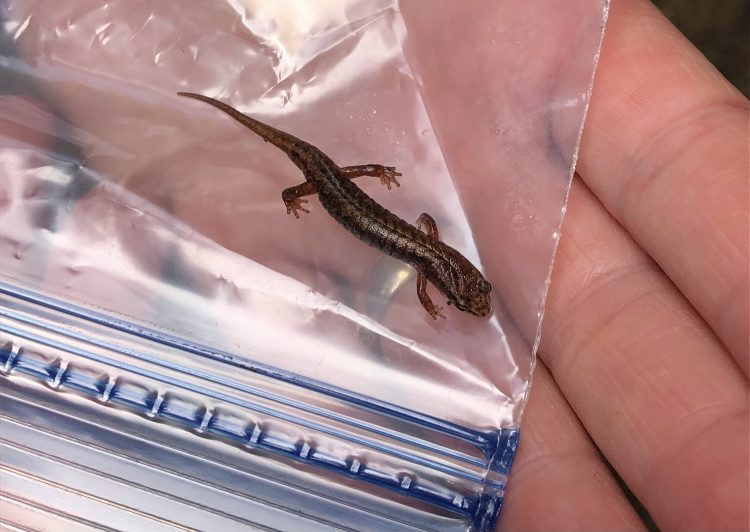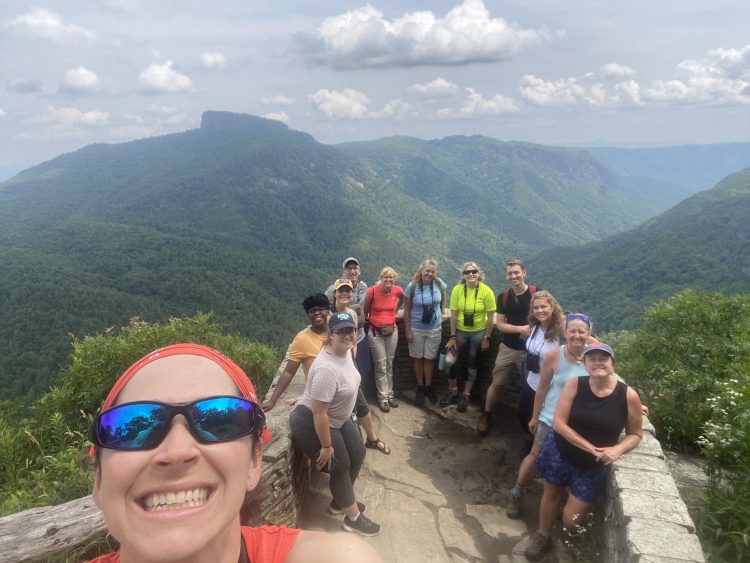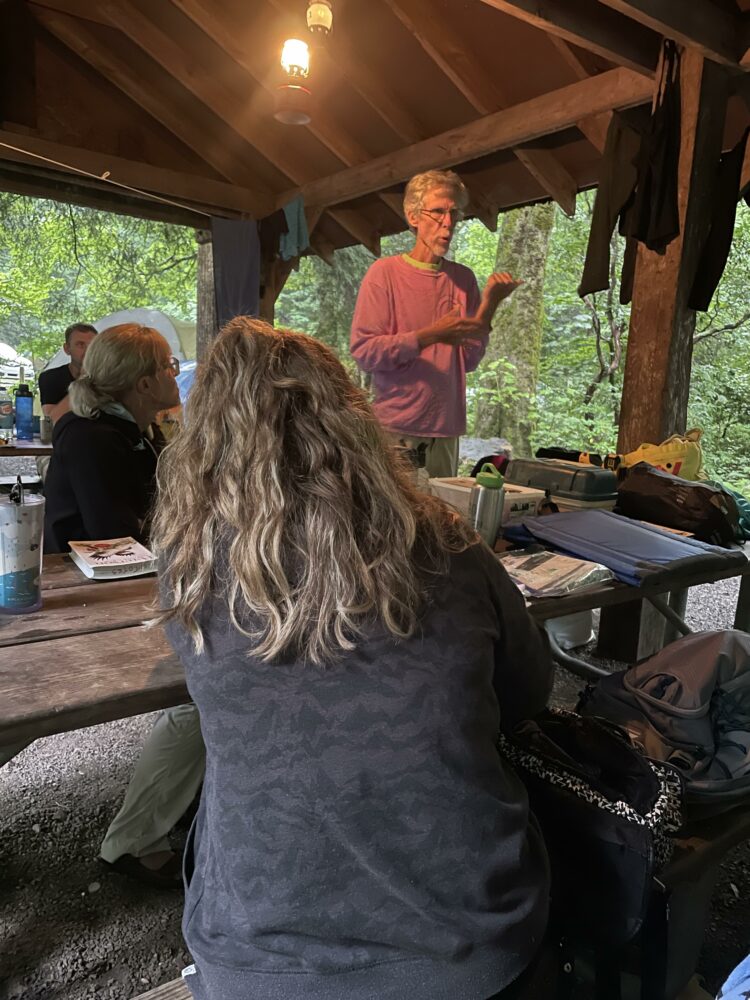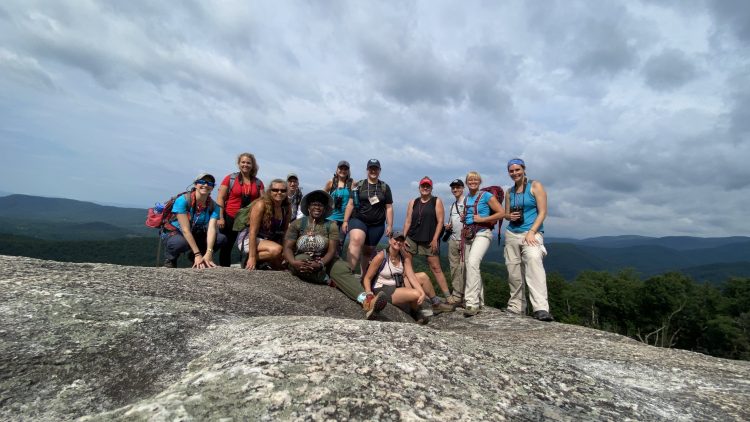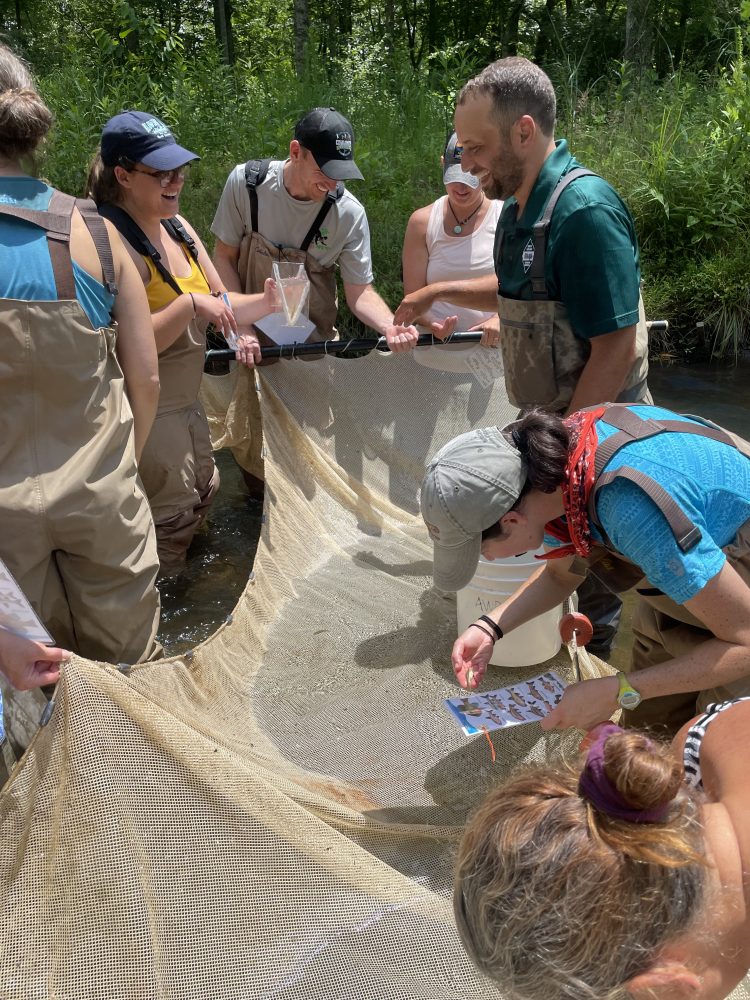“The Highs and Lows of Stone Mountain”
July 30, 2021 - 1 Comment
We completed a 3.3 mile hike on the Stone Mountain Loop trail after breakfast. Along the way we found an brightly colored red eft, the terrestrial juvenile phase of the Eastern Red-Spotted Newt, on the trail. We determined it was a salamander rather than a lizard because it had no scales and no claws. FYI, all newts are salamanders, but not all salamanders are newts. Newts are toxic to fish and small mammals. Adult males have something called nuptial pads, which are raised rough ridges, on the inside of their hind feet during the breeding season to help hang onto the females.
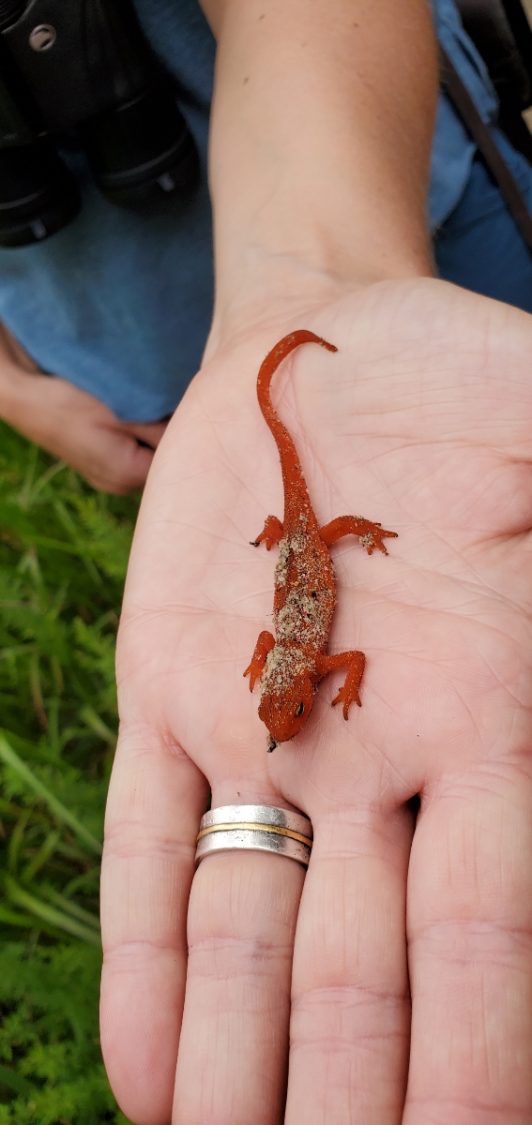
Eastern newt in the red eft life stage encountered in Stone Mountain State Park
We snacked on the summit of Stone Mountain while we observed the minerals in the igneous rock and discussed the processes that we thought were responsible for the creation of the granite dome, including continental collisions, magma cooling underground millions of years ago, and tons of weathering and erosion.
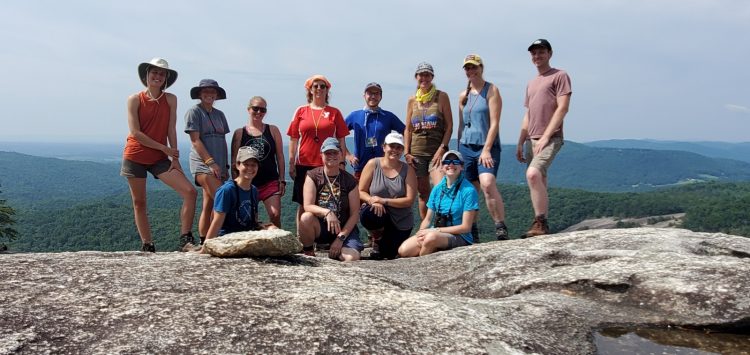
The Blue Ridge Institute poses atop Stone Mountain, NC.
After lunch, we met with TR Russ, one of the eight non-game fisheries biologists in the state that work for the NC Wildlife Commission. He passed around a stone roller fish preserved in alcohol, as well as a paddle fish, just 2 of the more than 200 species he works with!
Using a backpack electroshocker and a swine net, we collected (for observation only) a handful of species of fish, along with a few crayfish/crawdads, 2 with a leeches attached to them. TR found a horsehair worm, the stuff of nightmares, a parasite that burrows into a cricket’s body, driving it crazy and drawing it to the river, where it then EXPLODES out of the poor creature to continue its life cycle in the water.
We then went snorkeling to observe the same fish within their natural habitat. The heat and humidity was bad today, so the cold river water felt refreshing.
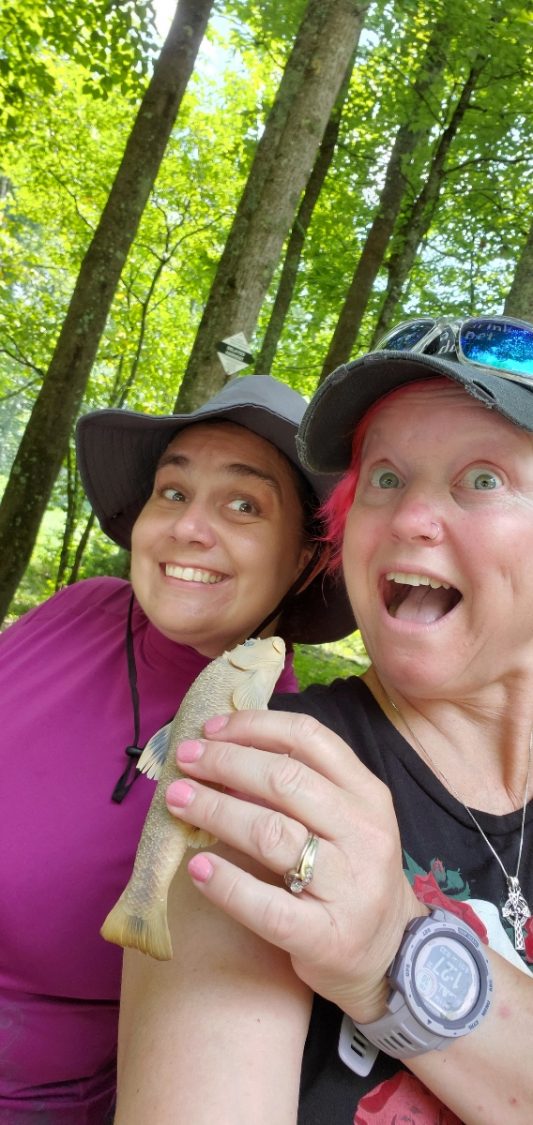
A quick selfie with Lenae, Becqui, and a striped jumprock fish while exploring the Roaring River at Stone Mountain State Park
This was followed by a visit to the bottom of Stone Mountain Falls, a 200-foot tall cascade. The problem is, to get to the Falls you have to climb down a flight of 300 stairs…and back up again.
We also learned to use the Seek app, which is a very resourceful tool in identifying species of flora and fauna. And experts within our group presented on topics of the hemlock wooly adelgid, the southern flying squirrel, and the raven. We received a bookmark full of adelgid information, played a group game featuring flying squirrel facts, and created a make and take modeled after the amazing raven.
All this in our first day! And what a day it was.


